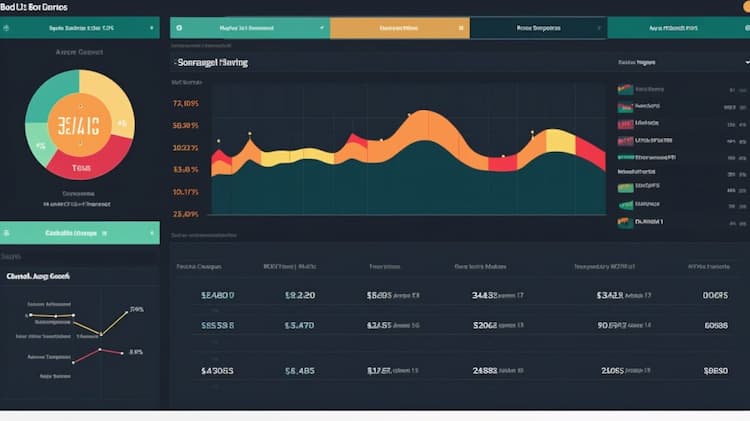FLCB ISSUER
The Franklin U.S. Core Bond ETF is managed by Franklin Templeton, a renowned global investment firm with a long history of providing innovative financial solutions to investors. With a commitment to delivering investment excellence, Franklin Templeton has established itself as a trusted issuer in the world of exchange-traded funds. The FLCB ETF seeks to provide investors with exposure to a diversified portfolio of U.S. bonds, including government, corporate debt, mortgage-backed, and asset-backed securities, while maintaining a focus on investment-grade debt securities. Leveraging its expertise and research-driven approach, Franklin Templeton aims to offer a reliable investment option for those seeking stability and potential income generation in the fixed-income market.
FLCB DIVIDEND
The FLCB Dividend ETF (FLCB) emphasizes dividend income as a core investment objective. This ETF is designed to provide investors with consistent dividend distributions, typically on a quarterly basis. FLCB's dividend eligibility is contingent on its holdings, primarily consisting of companies with strong dividend-paying track records. The ETF adheres to a well-defined dividend distribution policy, aligning with the dividend policies and performances of the underlying dividend-paying securities. Investors seeking a reliable source of dividend income may consider FLCB as a potential addition to their portfolio.
FLCB TRACKING
Monitoring the Performance of U.S. Core Bonds in the Franklin U.S. Core Bond ETF's Portfolio The Franklin U.S. Core Bond ETF is designed to closely follow the performance of U.S. core bonds. This exchange-traded fund (ETF) predominantly invests in bonds issued by U.S. entities, including government, corporate debt, mortgage-backed securities, and asset-backed securities. These bonds encompass a wide range of maturities and issuers, with a focus on maintaining credit quality. While the ETF aims to align its sector, credit, and duration exposures with the Bloomberg U.S. Aggregate Bond Index, its investment manager exercises discretion to optimize the fund's performance, potentially diverging from the benchmark index. Additionally, the fund may employ interest rate and credit-related derivatives, such as U.S. Treasury futures, interest rate swaps, and credit default swaps, to enhance returns and manage risk effectively. Franklin U.S. Core Bond ETF provides investors with a convenient means to access a diversified portfolio of U.S. core bonds while aiming to deliver competitive returns.
FLCB CORRELATION
The correlation aspect of the Franklin U.S. Core Bond ETF (FLCB) is not widely known, as this ETF primarily focuses on investing in U.S. bonds, including government, corporate debt, mortgage-backed, and asset-backed securities. Bonds are typically less correlated with equities, making FLCB a potential choice for investors seeking lower correlation with the stock market. To delve deeper into FLCB's correlations with various assets and sectors, investors can utilize the ETF Insider web app, which offers comprehensive data and insightful visualizations for a better understanding of this ETF's behavior and potential diversification benefits within their portfolios. By exploring correlations, investors can make more informed decisions and tailor their strategies to meet their financial goals.
FLCB SECTOR
The Franklin U.S. Core Bond ETF (FLCB) primarily operates within the fixed income sector. This ETF invests at least 80% of its net assets in bonds issued by U.S. entities, encompassing government bonds, corporate debt, mortgage-backed securities, and asset-backed securities. It focuses on maintaining exposure to investment-grade debt securities and aims to align its sector, credit, and duration exposures with the Bloomberg U.S. Aggregate Bond Index, which serves as its benchmark. FLCB may also use derivatives like interest rate swaps and credit default swaps to manage risk and optimize returns within its fixed income portfolio.
FLCB EXPOSURE
The Franklin U.S. Core Bond ETF (FLCB) primarily exposes investors to the U.S. bond market. This ETF aims to invest at least 80% of its net assets in bonds issued by U.S. entities, which can include government bonds, corporate debt, mortgage-backed securities, and asset-backed securities. The portfolio may encompass bonds with varying maturities, such as bonds, notes, bills, and debentures, while also covering bonds denominated in U.S. dollars issued by foreign banks and corporations. FLCB's investment strategy typically aligns its sector, credit, and duration exposures with the Bloomberg U.S. Aggregate Bond Index, although it may diverge from this benchmark due to the fund manager's independent investment decisions. To gain exposure to select interest rates, durations, or credit risks, FLCB may employ interest rate and credit-related derivatives, including U.S. Treasury futures, interest rate swaps, and credit default swaps, enhancing its flexibility and risk management capabilities. For deeper insights and detailed exposure analysis of FLCB and other U.S. ETFs, consider using our ETF Insider web app, which offers comprehensive visualization tools to explore market overlaps, correlations, and more.



